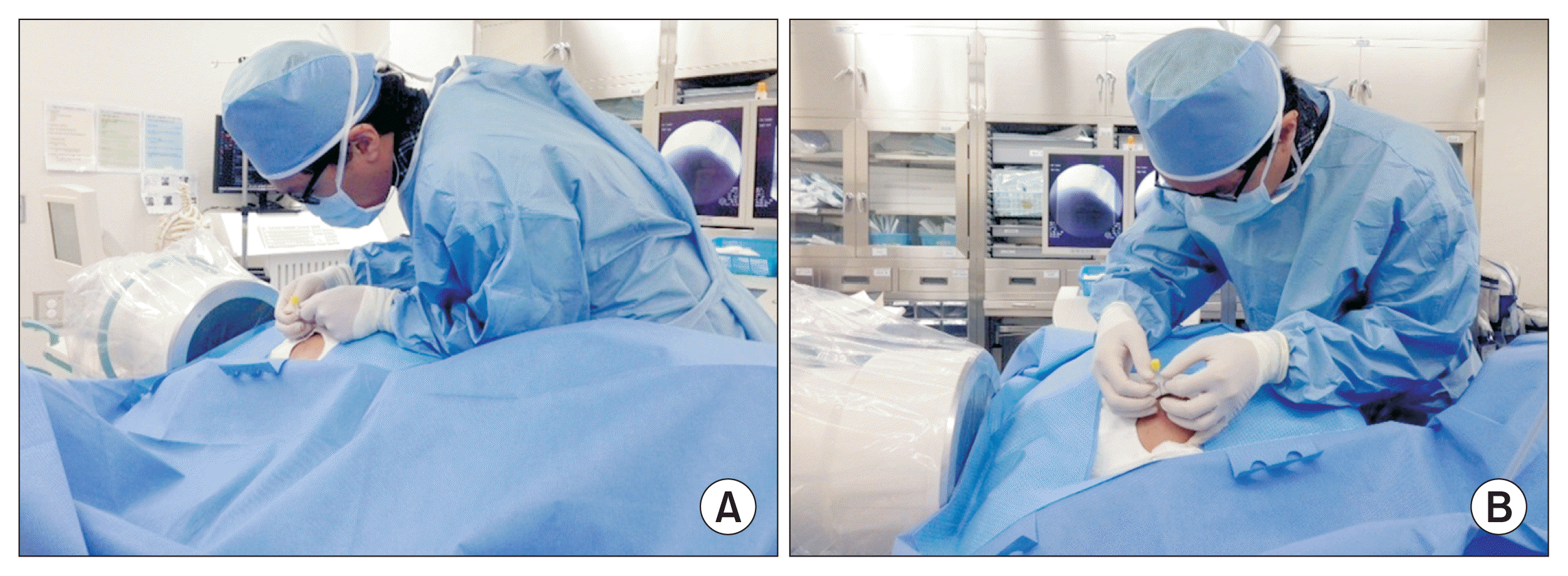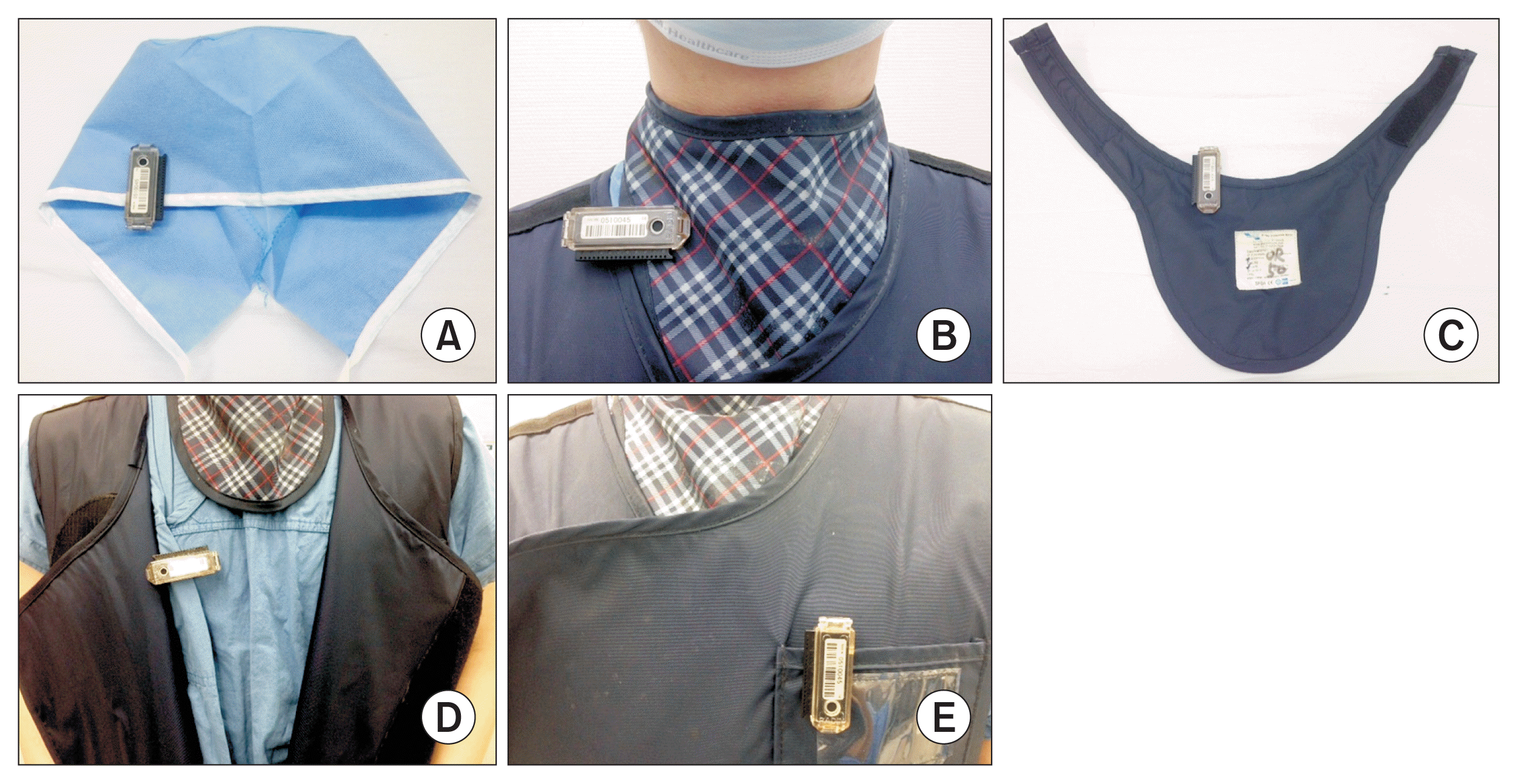1. Manchikanti L, Singh V, Hirsch JA. Saga of payment systems of ambulatory surgery centers for interventional techniques: an update. Pain Physician. 2012; 15:109–30. PMID:
22430649.
2. Vera GV, Aleksandra F, Dragan K, Andrija H. Assessment of genome damage in occupational exposure to ionising radiation and ultrasound. Mutat Res. 1997; 395:101–5. PMID:
9465919. DOI:
10.1016/S1383-5718(97)00149-6.

3. Andreassi MG. The biological effects of diagnostic cardiac imaging on chronically exposed physicians: the importance of being non-ionizing. Cardiovasc Ultrasound. 2004; 2:25. DOI:
10.1186/1476-7120-2-25. PMID:
15555078. PMCID:
538257.

4. Maffei F, Angelini S, Forti GC, Violante FS, Lodi V, Mattioli S, et al. Spectrum of chromosomal aberrations in peripheral lymphocytes of hospital workers occupationally exposed to low doses of ionizing radiation. Mutat Res. 2004; 547:91–9. DOI:
10.1016/j.mrfmmm.2003.12.003. PMID:
15013703.

6. White AH. Injection techniques for the diagnosis and treatment of low back pain. Orthop Clin North Am. 1983; 14:553–67. PMID:
6223258.

7. Bicket MC, Gupta A, Brown CH 4th, Cohen SP. Epidural injections for spinal pain: a systematic review and meta-analysis evaluating the “control” injections in randomized controlled trials. Anesthesiology. 2013; 119:907–31. DOI:
10.1097/ALN.0b013e31829c2ddd. PMID:
24195874.
8. Candido KD, Knezevic NN. Cervical epidural steroid injections for the treatment of cervical spinal (neck) pain. Curr Pain Headache Rep. 2013; 17:314. DOI:
10.1007/s11916-012-0314-7. PMID:
23315021.

9. Bose B. Quadriparesis following cervical epidural steroid injections: case report and review of the literature. Spine J. 2005; 5:558–63. DOI:
10.1016/j.spinee.2005.03.015. PMID:
16153586.

10. Hodges SD, Castleberg RL, Miller T, Ward R, Thornburg C. Cervical epidural steroid injection with intrinsic spinal cord damage. Two case reports. Spine (Phila Pa 1976). 1998; 23:2137–42. DOI:
10.1097/00007632-199810010-00020. PMID:
9794061.
11. Khan S, Pioro EP. Cervical epidural injection complicated by syrinx formation: a case report. Spine (Phila Pa 1976). 2010; 35:E614–6. DOI:
10.1097/BRS.0b013e3181cf7621. PMID:
20461029.
13. Neriishi K, Nakashima E, Minamoto A, Fujiwara S, Akahoshi M, Mishima HK, et al. Postoperative cataract cases among atomic bomb survivors: radiation dose response and threshold. Radiat Res. 2007; 168:404–8. DOI:
10.1667/RR0928.1. PMID:
17903036.

15. Ciraj-Bjelac O, Rehani MM, Sim KH, Liew HB, Vano E, Kleiman NJ. Risk for radiation-induced cataract for staff in interventional cardiology: is there reason for concern? Catheter Cardiovasc Interv. 2010; 76:826–34. DOI:
10.1002/ccd.22670. PMID:
20549683.

16. Vano E, Kleiman NJ, Duran A, Rehani MM, Echeverri D, Cabrera M. Radiation cataract risk in interventional cardiology personnel. Radiat Res. 2010; 174:490–5. DOI:
10.1667/RR2207.1. PMID:
20726724.

17. Chodick G, Bekiroglu N, Hauptmann M, Alexander BH, Freedman DM, Doody MM, et al. Risk of cataract after exposure to low doses of ionizing radiation: a 20-year prospective cohort study among US radiologic technologists. Am J Epidemiol. 2008; 168:620–31. DOI:
10.1093/aje/kwn171. PMID:
18664497. PMCID:
2727195.

18. Rehani MM, Vano E, Ciraj-Bjelac O, Kleiman NJ. Radiation and cataract. Radiat Prot Dosimetry. 2011; 147:300–4. DOI:
10.1093/rpd/ncr299. PMID:
21764807.

19. Stewart FA, Akleyev AV, Hauer-Jensen M, Hendry JH, Kleiman NJ, Macvittie TJ, et al. ICRP publication 118: ICRP statement on tissue reactions and early and late effects of radiation in normal tissues and organs--threshold doses for tissue reactions in a radiation protection context. Ann ICRP. 2012; 41:1–322. DOI:
10.1016/j.icrp.2012.02.001. PMID:
22925378.

20. The 2007 Recommendations of the International Commission on Radiological Protection. ICRP publication 103. Ann ICRP. 2007; 37:1–332. PMID:
18082557. DOI:
10.1016/j.icrp.2007.10.003.
21. Manchikanti L, Cash KA, Moss TL, Pampati V. Radiation exposure to the physician in interventional pain management. Pain Physician. 2002; 5:385–93. PMID:
16886017.

22. Jung CH, Ryu JS, Baek SW, Oh JH, Woo NS, Kim HK, et al. Radiation exposure of the hand and chest during C-arm fluoroscopy-guided procedures. Korean J Pain. 2013; 26:51–6. DOI:
10.3344/kjp.2013.26.1.51. PMID:
23342208. PMCID:
3546211.

23. Botwin KP, Freeman ED, Gruber RD, Torres-Rames FM, Bouchtas CG, Sanelli JT, et al. Radiation exposure to the physician performing fluoroscopically guided caudal epidural steroid injections. Pain Physician. 2001; 4:343–8. PMID:
16902680.
24. Botwin KP, Fuoco GS, Torres FM, Gruber RD, Bouchlas CC, Castellanos R, et al. Radiation exposure to the spinal interventionalist performing lumbar discography. Pain Physician. 2003; 6:295–300. PMID:
16880875.
25. Botwin KP, Thomas S, Gruber RD, Torres FM, Bouchlas CC, Rittenberg JJ, et al. Radiation exposure of the spinal interventionalist performing fluoroscopically guided lumbar transforaminal epidural steroid injections. Arch Phys Med Rehabil. 2002; 83:697–701. DOI:
10.1053/apmr.2002.32439. PMID:
11994810.

26. Politi L, Biondi-Zoccai G, Nocetti L, Costi T, Monopoli D, Rossi R, et al. Reduction of scatter radiation during transradial percutaneous coronary angiography: a randomized trial using a lead-free radiation shield. Catheter Cardiovasc Interv. 2012; 79:97–102. DOI:
10.1002/ccd.22947. PMID:
21520391.

27. Paulson EK, Sheafor DH, Enterline DS, McAdams HP, Yoshizumi TT. CT fluoroscopy--guided interventional procedures: techniques and radiation dose to radiologists. Radiology. 2001; 220:161–7. DOI:
10.1148/radiology.220.1.r01jl29161. PMID:
11425990.

29. Richman AH, Chan B, Katz M. Effectiveness of lead lenses in reducing radiation exposure. Radiology. 1976; 121:357–9. DOI:
10.1148/121.2.357. PMID:
981613.

31. Bordoli SJ, Carsten CG 3rd, Cull DL, Johnson BL, Taylor SM. Radiation safety education in vascular surgery training. J Vasc Surg. 2014; 59:860–4. DOI:
10.1016/j.jvs.2013.10.085. PMID:
24360583.

32. Friedman AA, Ghani KR, Peabody JO, Jackson A, Trinh QD, Elder JS. Radiation safety knowledge and practices among urology residents and fellows: results of a nationwide survey. J Surg Educ. 2013; 70:224–31. DOI:
10.1016/j.jsurg.2012.10.002. PMID:
23427968.

33. Cheon BK, Kim CL, Kim KR, Kang MH, Lim JA, Woo NS, et al. Radiation safety: a focus on lead aprons and thyroid shields in interventional pain management. Korean J Pain. 2018; 31:244–52. DOI:
10.3344/kjp.2018.31.4.244. PMID:
30310549. PMCID:
6177538.

34. Park PE, Park JM, Kang JE, Cho JH, Cho SJ, Kim JH, et al. Radiation safety and education in the applicants of the final test for the expert of pain medicine. Korean J Pain. 2012; 25:16–21. DOI:
10.3344/kjp.2012.25.1.16. PMID:
22259711. PMCID:
3259132.

35. Zhou Y, Singh N, Abdi S, Wu J, Crawford J, Furgang FA. Fluoroscopy radiation safety for spine interventional pain procedures in university teaching hospitals. Pain Physician. 2005; 8:49–53. PMID:
16850042.
36. Cousin AJ, Lawdahl RB, Chakraborty DP, Koehler RE. The case for radioprotective eyewear/facewear. Practical implications and suggestions. Invest Radiol. 1987; 22:688–92. DOI:
10.1097/00004424-198708000-00012. PMID:
3667176.





 PDF
PDF Citation
Citation Print
Print





 XML Download
XML Download